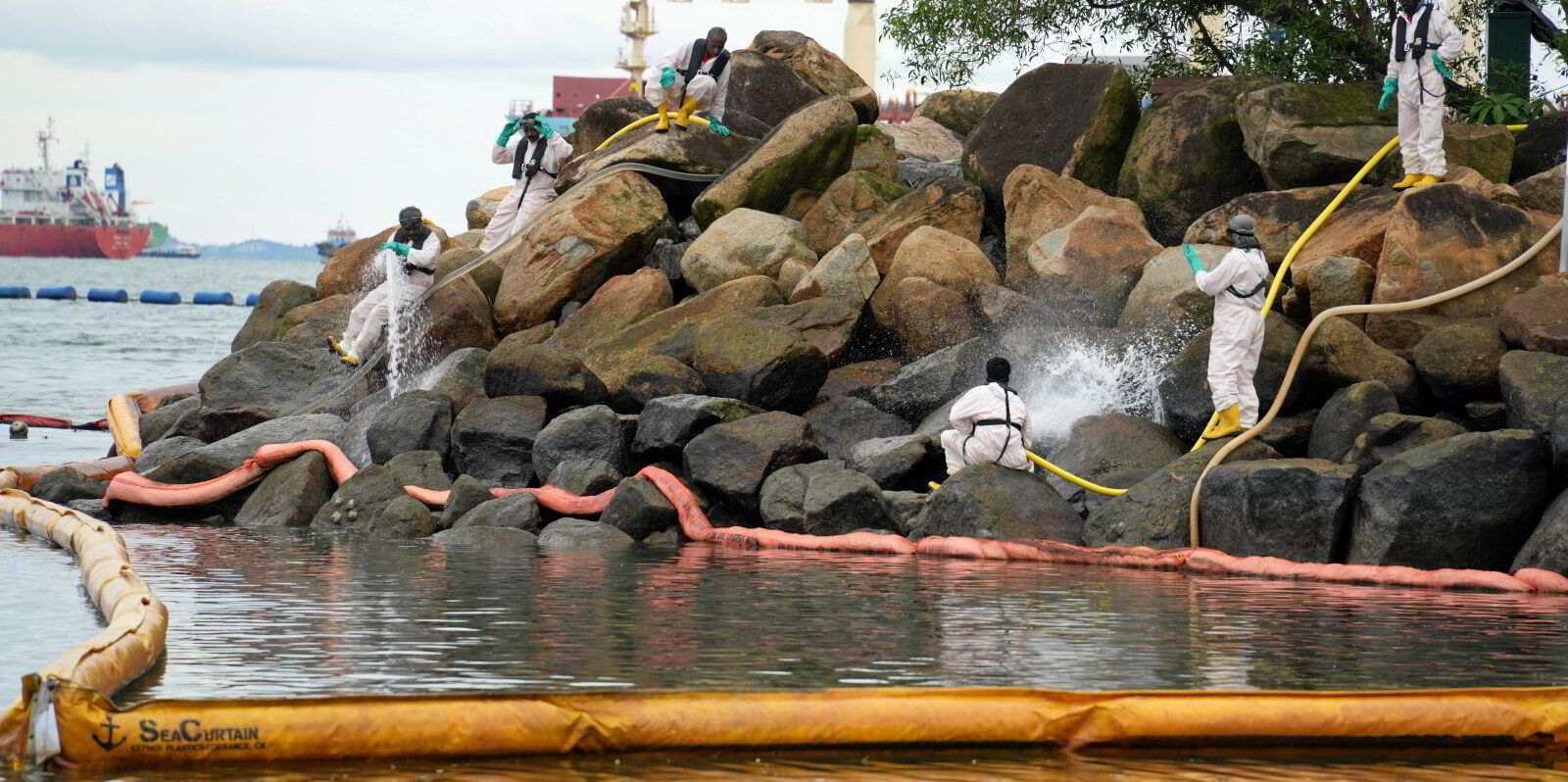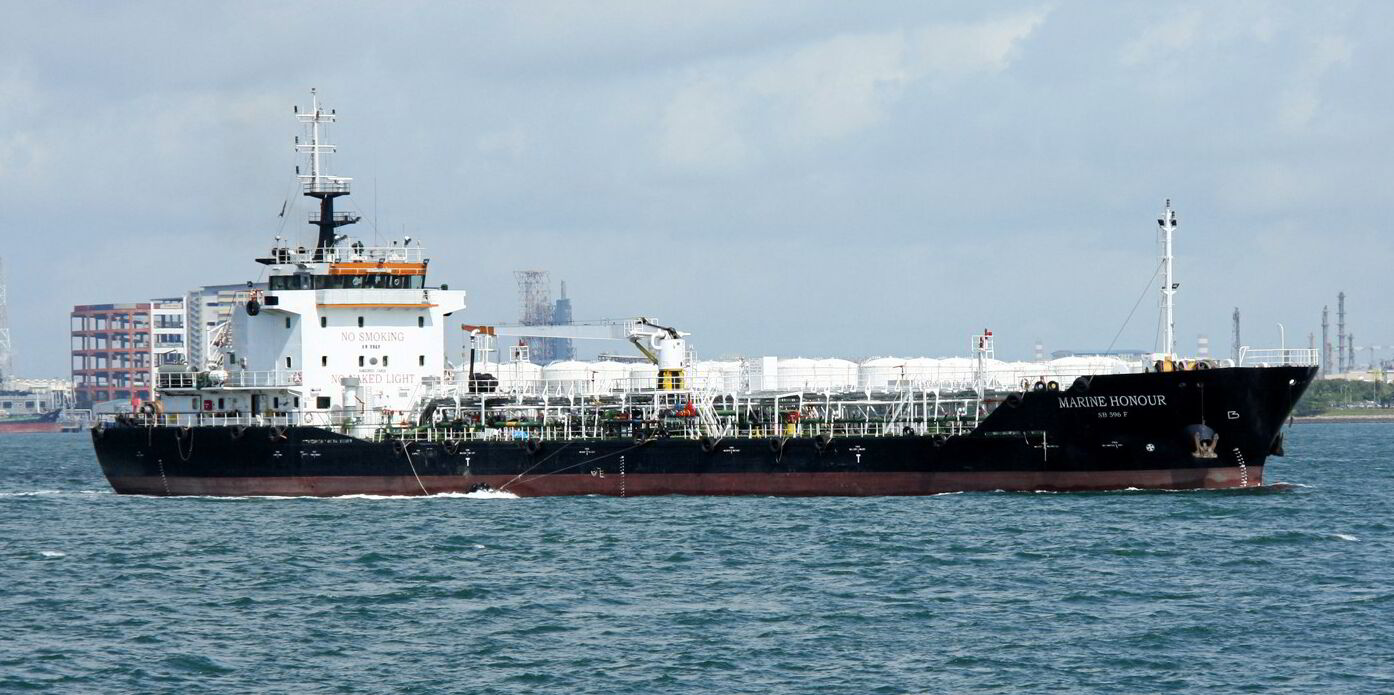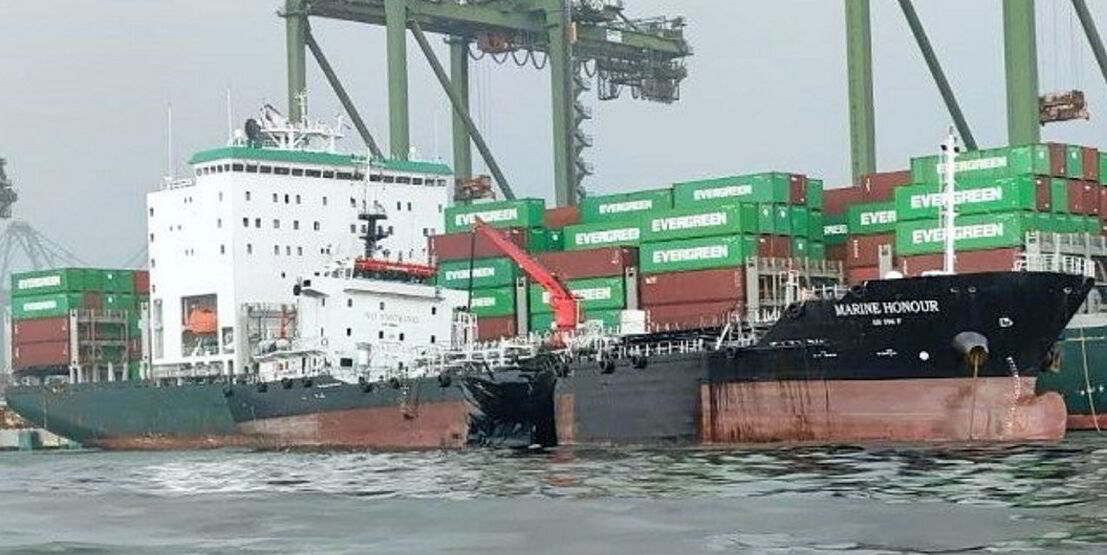Singapore authorities say that the lightering process to remove the oil on a bunker tanker that was rammed by a Dutch dredger on 14 June could take up to two weeks.
The 9,000-dwt bunker tanker Marine Honour (built 2007) spilt a large quantity of very low sulphur fuel oil that it was supplying to an Evergreen container ship at the PSA Pasir Panjang container terminal after Van Oord’s 29,900-gt trailing suction hopper dredger Vox Maxima (built 2009) allided with it.
Since then, the tanker has been anchored off the western petroleum anchorage.
“The remaining fuel oil onboard from the ruptured cargo tank and its full contents onboard the vessel must be emptied before it can be towed into the shipyard for its repair,” a taskforce of government bodies that have been responding to the oil spill incident said in their latest joint update.
“The safe lightering of Marine Honour is expected to take one to two weeks as care is needed to ensure the stability of the vessel throughout the process,” the taskforce said.
“Aside the containment booms laid around the vessel, a 35-tonne oil load Current Buster system is on station to respond to any potential leaks in the lightering process to transfer the Marine Honour oil to another vessel.”
Spill clean-up continues
The taskforce said the removal of bulk oil from the sea and beaches is nearly completed, with about 550 tonnes of oil-soaked sand and debris collected from affected beaches.
“There has been no observed oil slick along the East Coast and Changi since 18 June based on both satellite and drone images. The bulk of oil-soaked sand has been removed from most of the affected public beaches, with the exception of Tanjong and Palawan beach at Sentosa.”
Tanjong and Palawan beaches, two of Singapore’s most popular beaches, were among the most heavily impacted areas and the taskforce said that based on its preliminary estimates, specialised clean-up operations are expected to take around three months.

The taskforce added it was moving into the next phase of the clean-up response, which is focused on the more difficult clean-up of oil remnants trapped in areas such as coastal features, waterside infrastructures and rock bunds.
“These areas are not as easily accessible, and oil could be trapped in crevices and below beach surfaces that require significant effort to clean.
“This new phase will involve specialised resources and equipment. This cleaning will be done carefully, considering the conditions at each site, such as wind, tide and currents, to minimise the oil on the rock bunds from re-polluting the coastline, and beaches,” it said.
Cleaning of trapped oil remnants in the shoreline areas and waterside infrastructures off Pasir Panjang Container Terminal including the PSA Terminal and Labrador Nature Reserve is said to have been largely completed on 23 June with no observed residual oil floating off the shoreline and the stranded oil near the shore and port structure as of Monday.





